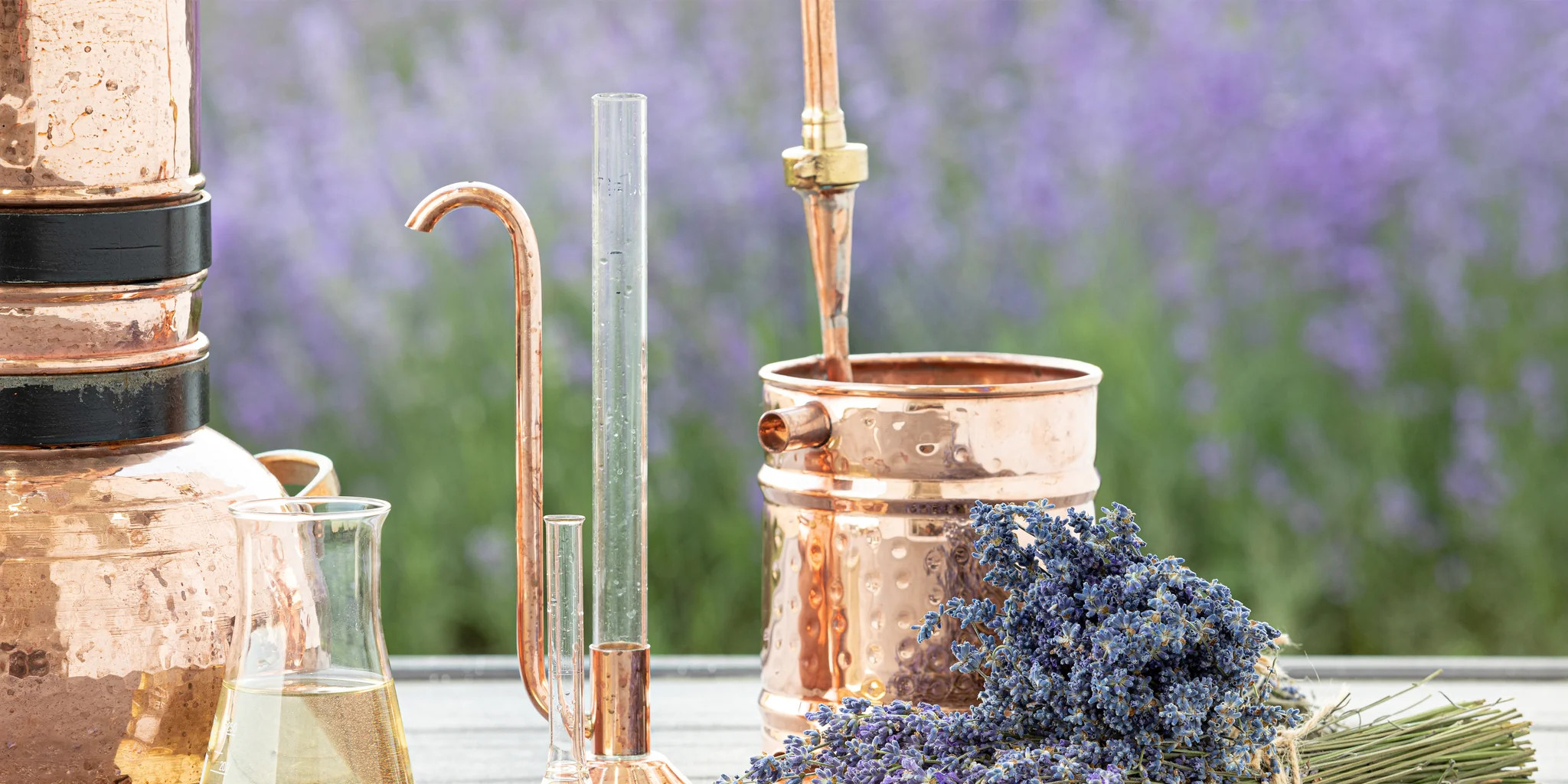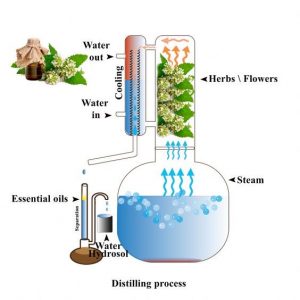
Steam distillation is the most commonly used method for extracting essential oils from plant materials. It is a gentle and efficient process that avoids damaging the delicate volatile compounds that give essential oils their unique aromas and therapeutic properties.
Here’s a step-by-step guide to the process of steam distillation for essential oil extraction:
Preparation:
- Gather your materials: You will need a still, a boiler, a condenser, a collection vessel, a source of heat, and plant material.
- Choose your plant material: The best plant material for steam distillation is fresh, healthy, and free from disease. You can use flowers, leaves, stems, seeds, or bark, depending on the plant you are using.
- Prepare the plant material: Cut the plant material into small pieces to increase the surface area and facilitate the extraction of essential oils.
Distillation:

- Set up the still: Place the plant material in the still and add water to the boiler. The water level should be just below the plant material.
- Heat the water: Heat the water in the boiler until it boils. Steam will rise through the plant material and carry the volatile compounds with it.
- Cool the steam: The steam and volatile compounds will travel up the still neck and into the condenser. The condenser will cool the steam, causing it to condense back into a liquid.
- Collect the essential oil: The condensed liquid will separate into two layers: a layer of essential oil and a layer of hydrosol (plant water). The essential oil will float on top of the hydrosol and can be collected using a separatory funnel.
Post-distillation:
- Store the essential oil: Pour the essential oil into a dark glass bottle and store it in a cool, dark place.
- Clean the equipment: Disassemble the still and wash all of the equipment with warm soapy water.
Additional Tips:
- The time required for steam distillation can vary depending on the plant material and the amount of essential oil being extracted.
- The temperature of the steam should not exceed 100 degrees Celsius (212 degrees Fahrenheit) to avoid damaging the essential oils.
- You can add a carrier oil, such as almond oil or jojoba oil, to the hydrosol to make it easier to use.
Safety Precautions:
- Steam distillation can be a dangerous process if not done properly. Always wear gloves, safety glasses, and a long-sleeved shirt when working with essential oils.
- Never leave the still unattended while it is operating.
- Be aware of the flammable nature of essential oils and store them in a safe place.
Benefits of Steam Distillation:
- Steam distillation is a gentle and efficient process that preserves the quality of essential oils.
- It is a relatively simple process that can be done at home with basic equipment.
- Steam distillation can be used to extract essential oils from a wide variety of plant materials.
Conclusion:
Steam distillation is a versatile and effective method for extracting essential oils. By following the steps in this guide, you can easily extract essential oils from your favorite plants and enjoy their therapeutic benefits.

